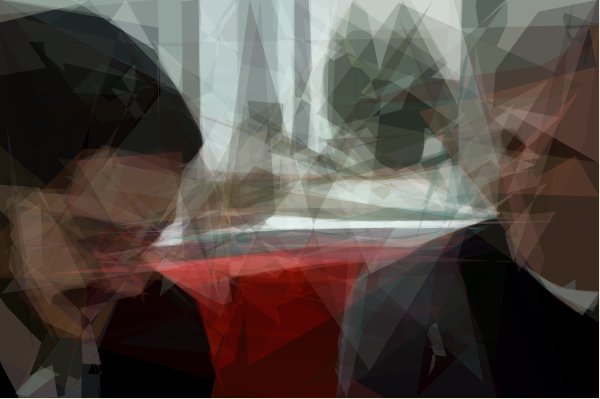Saturday 13 December 2008 — This is 17 years old. Be careful.
Roger Alsing has made a fascinating image hack: reproduce an image with randomly-placed translucent polygons: Genetic Programming: Evolution of Mona Lisa. At each step, a random polygon is placed on the image, and a simple image comparison function determines whether a new proposed polygon makes it look more or less like the goal image. It’s not fast, but the results are kind of startling. A photo of me and a friend:

And a polygonal reproduction with 108 polygons:

This reminds me a little of the CSS Homer, recreating an image by amassing unlikely components in just the right way. BTW: the comments on Roger’s post contain a number of AI nerds debating whether this is truly genetic programming, and if so what kind, or if it is simply a hill-climbing algorithm. In any case, it’s very cool.
Comments
ps. i think you meant 'genetic' programming, instead of generic
Anybody have enough time on their hands to try it?
Add a comment: